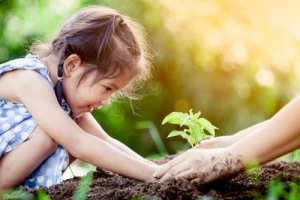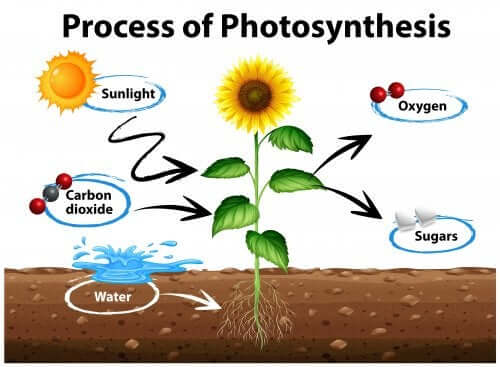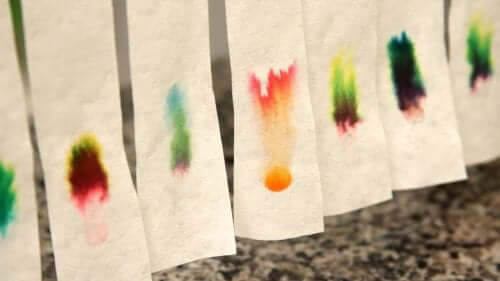How to Explain Photosynthesis to Children


Written and verified by the psychologist María Alejandra Castro Arbeláez
Photosynthesis is the process through which plants obtain the nutrients they need in order to grow. Just like animals and humans, plants must transform the substances they take into nutrients that are suitable for their development. This process takes place thanks to sunlight, which is what sets off photosynthesis. Today we’ll help you explain photosynthesis to children.
Why is it so important for children to understand photosynthesis? It’s a crucial process that takes place in nature and that allows for the survival of humans and animals. Understanding this concept will help children gain an appreciation and respect for nature.
Prior concepts to explain photosynthesis to children
Before we get into the details of the cycle of photosynthesis, it’s important to clarify a few other concepts. In photosynthesis, there is a series of elements that make the entire process possible. We can summarize them in the following groups:
Atmospheric gases
The gases that participate in photosynthesis are carbon dioxide (CO2) and oxygen (O2). Carbon dioxide is a gas that consists of two atoms of oxygen to every one atom of carbon. It’s not toxic or flammable. And where does it come from? Animals and human beings produce it when we breathe.
O2 consists of two oxygen atoms. This gas is odorless and colorless and, unlike carbon dioxide, can cause combustion. This is the gas that animals and humans take in when we breathe.
Conducting vessels
The circulatory system of plants consists of two conducting vessels known as xylem and phloem. They connect the inferior part of a plant’s roots with the rest of the plant, stem, and leaves. Xylem transports water and mineral salts to the leaves and phloem distributes the products of photosynthesis to all of the cells of the plant.

Photosynthetic pigments
Chlorophylls are green-colored pigments that are found in chloroplasts. Thanks to these pigments, photosynthesis can take place, and they’re also responsible for giving plants their green color. Carotenes and xanthophylls are other pigments that are red and orange in color and help the chlorophylls carry out photosynthesis.
Other elements that are present in leaves
Stomas are the lungs of plants. For the most part, these pores are located on the underside of leaves. They’re responsible for the regular exchange of carbon dioxide and oxygen between plants and the atmosphere.
Chloroplasts contain chlorophyll. They’re countersunk organelles surrounded by a double membrane. They’re present only in the cells of vegetables and some bacteria. This is where photosynthesis takes place.
What is the cycle of photosynthesis?
The cycle of photosynthesis occurs in several steps that lead up to the fixing of carbon dioxide and the incorporation of atmospheric carbon in the cycle of the formation of sugars.
- Plants take in water and mineral salts through their roots. This water and mineral containing substance is known as xylem sap.
- Sap flows to the leaves via the xylem.
- The stomas in a plant’s leaves capture carbon dioxide from the air. This gas then mixes with the xylem sap and turns it into phloem sap.
- As a result of the previous process, plants release oxygen into the environment.
- The phloem sap, formed by glucose, is distributed throughout the plant through the phloem.
What produces this transformation? The photosynthesis reaction:
Sun rays shine on the leaves of plants and activate the chlorophyll of the chloroplasts. These active chlorophylls set off a series of reactions in order to produce sugar and oxygen. The following equation represents this process:
CO2 + H2O + Sunlight ——–→ Carbohydrates (glucose) + O2
So, during photosynthesis, plants transform light energy into chemical energy. These organisms that are able to produce their own nutrients are known as autotrophs.
More details to explain photosynthesis to children
Man has long said that forests are the lungs of the planet. Why is this? Because photosynthesis causes plants to release oxygen as a waste product, which is exactly what humans and animals need in order to survive. The Amazon rain forest is the largest lung on the planet and releases 20% of the world’s oxygen.
Does photosynthesis take place in the fall and winter? This is a logical question, given the lack of abundant sunlight and green leaves during these seasons.
During fall and winter, plants consume carbohydrate reserves that they’ve produced during the rest of the year. During this time period, chlorophylls and leaves are lacking, leaving plants in a lethargic state. Remember, without chlorophyll, there is no photosynthesis.
Does photosynthesis take place in plants that have red leaves? There are other non-photosynthetic pigments in the leaves of these trees that are responsible for their color. These pigments are located in the cytoplasm of the leaves rather than in their chloroplasts. Just because we don’t see chlorophylls doesn’t mean they aren’t there.

An experiment to prove the presence of chlorophylls
You can carry out a simple experiment at home which will help you in the task of explaining photosynthesis to children. You’ll need the following materials:
- A glass.
- A strip of absorbent paper. For example, you can take a coffee filter and cut a strip that’s an inch wide.
- Burning alcohol or alcohol from the pharmacy.
- A red leaf, such as one from a plum tree.
To carry out the experiment, have your children rub the underside of the leaf on the strip of absorbent paper. Make sure they don’t rub it too close to the edge. Pour a bit of alcohol in the glass – about 3/4 of a centimeter deep. Hold the paper strip so that the bottom tip touches the alcohol.
After a few minutes, you’ll notice how the different colors begin to separate. What’s more, you’ll be able to observe the green tone of the chlorophylls.
“The mind is not a vessel to be filled but a fire to be kindled.”
– Plutarch –
Photosynthesis is the process through which plants obtain the nutrients they need in order to grow. Just like animals and humans, plants must transform the substances they take into nutrients that are suitable for their development. This process takes place thanks to sunlight, which is what sets off photosynthesis. Today we’ll help you explain photosynthesis to children.
Why is it so important for children to understand photosynthesis? It’s a crucial process that takes place in nature and that allows for the survival of humans and animals. Understanding this concept will help children gain an appreciation and respect for nature.
Prior concepts to explain photosynthesis to children
Before we get into the details of the cycle of photosynthesis, it’s important to clarify a few other concepts. In photosynthesis, there is a series of elements that make the entire process possible. We can summarize them in the following groups:
Atmospheric gases
The gases that participate in photosynthesis are carbon dioxide (CO2) and oxygen (O2). Carbon dioxide is a gas that consists of two atoms of oxygen to every one atom of carbon. It’s not toxic or flammable. And where does it come from? Animals and human beings produce it when we breathe.
O2 consists of two oxygen atoms. This gas is odorless and colorless and, unlike carbon dioxide, can cause combustion. This is the gas that animals and humans take in when we breathe.
Conducting vessels
The circulatory system of plants consists of two conducting vessels known as xylem and phloem. They connect the inferior part of a plant’s roots with the rest of the plant, stem, and leaves. Xylem transports water and mineral salts to the leaves and phloem distributes the products of photosynthesis to all of the cells of the plant.

Photosynthetic pigments
Chlorophylls are green-colored pigments that are found in chloroplasts. Thanks to these pigments, photosynthesis can take place, and they’re also responsible for giving plants their green color. Carotenes and xanthophylls are other pigments that are red and orange in color and help the chlorophylls carry out photosynthesis.
Other elements that are present in leaves
Stomas are the lungs of plants. For the most part, these pores are located on the underside of leaves. They’re responsible for the regular exchange of carbon dioxide and oxygen between plants and the atmosphere.
Chloroplasts contain chlorophyll. They’re countersunk organelles surrounded by a double membrane. They’re present only in the cells of vegetables and some bacteria. This is where photosynthesis takes place.
What is the cycle of photosynthesis?
The cycle of photosynthesis occurs in several steps that lead up to the fixing of carbon dioxide and the incorporation of atmospheric carbon in the cycle of the formation of sugars.
- Plants take in water and mineral salts through their roots. This water and mineral containing substance is known as xylem sap.
- Sap flows to the leaves via the xylem.
- The stomas in a plant’s leaves capture carbon dioxide from the air. This gas then mixes with the xylem sap and turns it into phloem sap.
- As a result of the previous process, plants release oxygen into the environment.
- The phloem sap, formed by glucose, is distributed throughout the plant through the phloem.
What produces this transformation? The photosynthesis reaction:
Sun rays shine on the leaves of plants and activate the chlorophyll of the chloroplasts. These active chlorophylls set off a series of reactions in order to produce sugar and oxygen. The following equation represents this process:
CO2 + H2O + Sunlight ——–→ Carbohydrates (glucose) + O2
So, during photosynthesis, plants transform light energy into chemical energy. These organisms that are able to produce their own nutrients are known as autotrophs.
More details to explain photosynthesis to children
Man has long said that forests are the lungs of the planet. Why is this? Because photosynthesis causes plants to release oxygen as a waste product, which is exactly what humans and animals need in order to survive. The Amazon rain forest is the largest lung on the planet and releases 20% of the world’s oxygen.
Does photosynthesis take place in the fall and winter? This is a logical question, given the lack of abundant sunlight and green leaves during these seasons.
During fall and winter, plants consume carbohydrate reserves that they’ve produced during the rest of the year. During this time period, chlorophylls and leaves are lacking, leaving plants in a lethargic state. Remember, without chlorophyll, there is no photosynthesis.
Does photosynthesis take place in plants that have red leaves? There are other non-photosynthetic pigments in the leaves of these trees that are responsible for their color. These pigments are located in the cytoplasm of the leaves rather than in their chloroplasts. Just because we don’t see chlorophylls doesn’t mean they aren’t there.

An experiment to prove the presence of chlorophylls
You can carry out a simple experiment at home which will help you in the task of explaining photosynthesis to children. You’ll need the following materials:
- A glass.
- A strip of absorbent paper. For example, you can take a coffee filter and cut a strip that’s an inch wide.
- Burning alcohol or alcohol from the pharmacy.
- A red leaf, such as one from a plum tree.
To carry out the experiment, have your children rub the underside of the leaf on the strip of absorbent paper. Make sure they don’t rub it too close to the edge. Pour a bit of alcohol in the glass – about 3/4 of a centimeter deep. Hold the paper strip so that the bottom tip touches the alcohol.
After a few minutes, you’ll notice how the different colors begin to separate. What’s more, you’ll be able to observe the green tone of the chlorophylls.
“The mind is not a vessel to be filled but a fire to be kindled.”
– Plutarch –
All cited sources were thoroughly reviewed by our team to ensure their quality, reliability, currency, and validity. The bibliography of this article was considered reliable and of academic or scientific accuracy.
- Cañal, P. (1992). ¿Cómo mejorar la enseñanza sobre la nutrición de las plantas verdes? Sevilla: Junta de Andalucía. Recuperado de Junta de Andalucía.
- González Huiman, F. (2007). Fotosíntesis sin clorofila y las plantas rojas [artículo en blog]. Recuperado de: fgonzalesh.blogspot.com
- Educapeques. (2016). la fotosíntesis: guía para aprender de la fotosíntesis. Recuperado de: educapeques.com
- Pérez Porto, J. y Merino, M. (2014). Definición de la fotosíntesis [artículo en blog]. Recuperado de: definicion.de
This text is provided for informational purposes only and does not replace consultation with a professional. If in doubt, consult your specialist.








